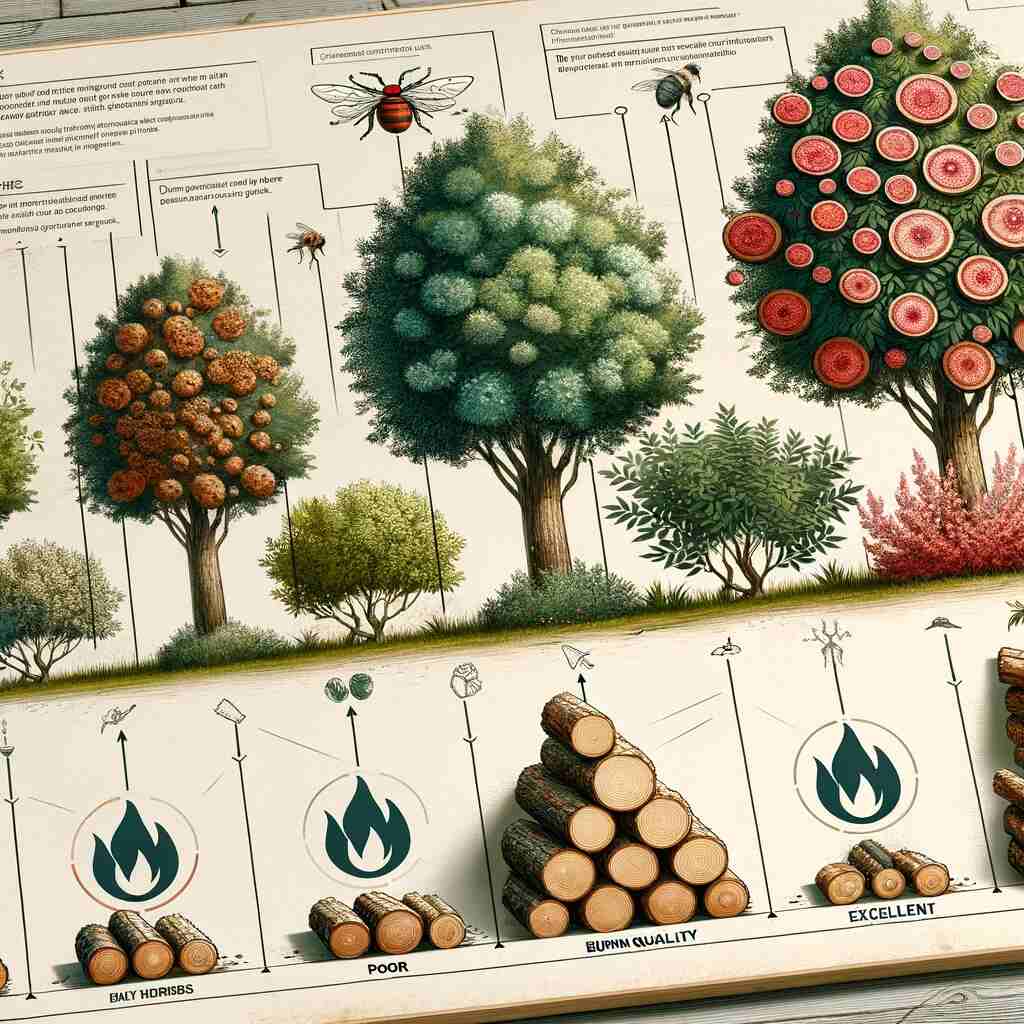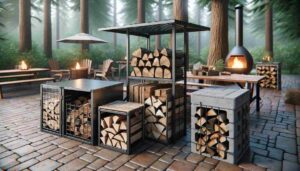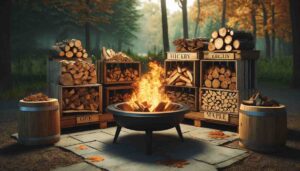Firewood is typically harvested from a variety of tree species, including hardwoods like oak and maple, and softwoods like pine and spruce. The type of wood used can influence how well it burns, the heat it produces, and the amount of creosote and smoke generated during combustion. However, the health of the tree from which the firewood is sourced also plays a crucial role in determining its quality as fuel.
Trees can be susceptible to various diseases, which can affect the composition and moisture content of the wood. These diseases can have a significant impact on the burning quality of the firewood, making it essential to understand how different tree diseases can affect this important resource.
The Importance of Firewood Quality
Before delving into the impact of tree diseases on firewood, it’s important to understand why firewood quality matters. The quality of firewood affects several key factors:
- Efficiency: High-quality firewood burns more efficiently, producing more heat with less smoke and creosote buildup.
- Safety: Poor-quality firewood can lead to chimney fires and increased air pollution due to excessive smoke.
- Cost-effectiveness: High-quality firewood provides better value for your money, as it produces more heat per unit of wood.
- Environmental Impact: Using better quality firewood reduces environmental pollution and minimizes the carbon footprint associated with burning wood.
- Ease of Use: High-quality firewood is easier to ignite and burns steadily, making it more convenient for heating and cooking.
With these factors in mind, let’s explore how different tree diseases can affect the quality of firewood.
Common Tree Diseases and Their Impact on Firewood
1. Heart Rot
Heart rot is a fungal disease that affects the interior, or heartwood, of trees. It causes decay, making the wood softer and less dense. Firewood from trees with heart rot tends to burn less efficiently because the decayed wood contains higher moisture levels, which reduce its energy content.
Impact on Burning Quality: Firewood from trees with heart rot burns with more smoke and produces less heat. It also tends to be more difficult to ignite due to its higher moisture content.
2. Dutch Elm Disease
Dutch Elm Disease is a devastating disease that primarily affects elm trees. It is caused by a fungus transmitted by elm bark beetles. Infected trees typically die within a few years. The wood from diseased elm trees can still be used as firewood, but it may have some drawbacks.
Impact on Burning Quality: While the wood from elm trees affected by Dutch Elm Disease can still be used for fuel, it may be more brittle and prone to splitting. Additionally, it can produce more creosote during combustion, which can increase the risk of chimney fires.
3. Oak Wilt
Oak wilt is a fungal disease that affects oak trees, particularly red oaks. It spreads through root grafts and insect vectors, causing the tree’s leaves to wilt and die. The impact of oak wilt on firewood quality depends on the stage of the disease when the tree is harvested.
Impact on Burning Quality: If oak trees affected by oak wilt are cut and used as firewood before the disease has advanced significantly, the wood can still be of good quality. However, if the disease has progressed, the wood may have a higher moisture content and be less desirable for burning.
4. Pine Beetle Infestations
Pine beetles are tiny insects that can infest pine trees, causing extensive damage. The blue stain fungus carried by these beetles can also affect the wood, impacting its burning characteristics.
Impact on Burning Quality: Wood from pine trees infested with pine beetles and stained by the associated fungus can burn more rapidly and with increased smoke. The blue stain can give the wood a bluish tint, but it doesn’t necessarily render it unusable for firewood.
5. Chestnut Blight
Chestnut blight is a fungal disease that almost wiped out the American chestnut tree in the early 20th century. While the chestnut tree is not commonly used for firewood, its wood does have some unique properties worth mentioning.
Impact on Burning Quality: Chestnut wood, when affected by chestnut blight, can be more prone to decay. However, it can still be used as firewood and burns relatively well, producing a pleasant aroma.
Factors to Consider When Using Diseased Firewood
When considering the use of firewood from trees affected by disease, several factors should be taken into account:
- Moisture Content: Wood from diseased trees often has higher moisture content. It’s essential to properly season this wood by allowing it to dry for an extended period, preferably under cover, to improve its burning quality.
- Creosote Buildup: Be aware that some diseased wood may produce more creosote during combustion. Regular chimney cleaning is essential to reduce the risk of chimney fires.
- Storage: Store firewood from diseased trees separately from healthy wood to prevent the potential spread of disease.
- Alternative Uses: If the wood from diseased trees is not suitable for burning, consider alternative uses such as crafting or outdoor projects.
- Local Regulations: Check local regulations and guidelines regarding the use of firewood from diseased trees. Some areas may have restrictions to prevent the spread of tree diseases.
Conclusion
The quality of firewood can vary significantly depending on the type of tree from which it is sourced and whether that tree is affected by disease. While wood from diseased trees can still be used for fuel, it often requires special attention, including proper seasoning and maintenance, to ensure safe and efficient combustion.
Understanding the impact of different tree diseases on firewood quality is essential for anyone who relies on wood as a source of heat or fuel. By making informed choices and taking appropriate precautions, you can maximize the benefits of firewood while minimizing potential drawbacks associated with using wood from diseased trees.
In conclusion, the quality of firewood is not solely determined by the type of tree but also by the health of the tree itself. By being mindful of the potential effects of tree diseases on firewood quality, you can enjoy the warmth and comfort of a well-functioning fireplace or wood stove while minimizing the risks associated with using diseased wood.










